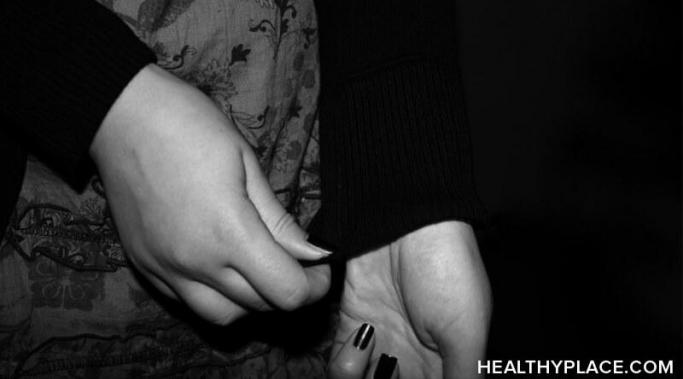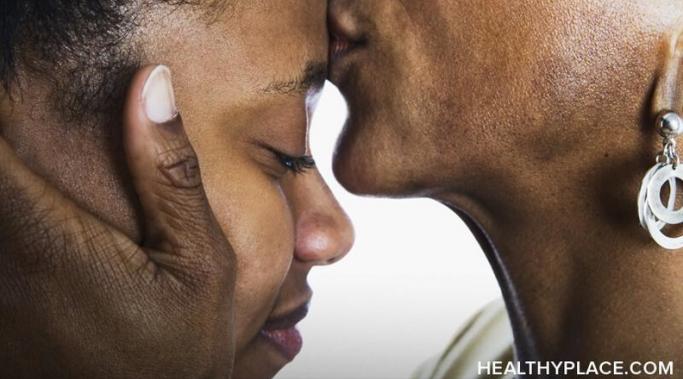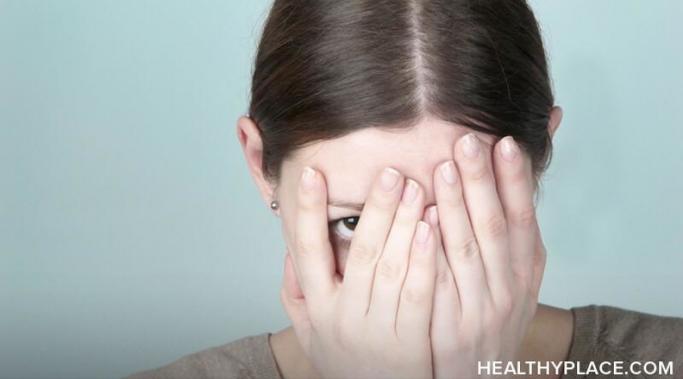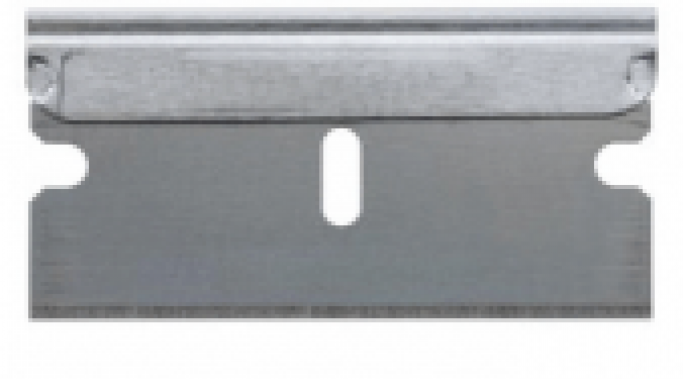Self-harm stigma is a bit different than the stigma surrounding, say, something like schizophrenia. Whereas there is no overarching societal perception of schizophrenia as an embarrassing condition to have, there is certainly an element of embarrassment that is created by self-harm stigma.
Stigma of Self-Harm
How can there be invisible self-harm? Self-harm is assumed to be apparent to the eye — a reasonable assumption given that self-harm is a physical act performed on the physical body and that self-harm is used at times as a way of making invisible, psychic pain visible and concrete. But not all self-harm can be seen. Invisible self-harm is just as dangerous as visible self-injuries.
You see this stigma of self-harm for attention played out in TV shows, movies, and often even in real life: A person engages in self-harm. This behavior is noticed by another person, either because the self-harmer has confessed or wears visible scars. People debate among themselves about whether this self-harming behavior warrants confronting the person and/or seeking professional help for the person. Then, as if on cue, someone suggests they forget about the whole thing, and says something along the lines of, "She's just self-harming for the attention."
People want to know why self-injury is so prevalent in borderline personality disorder (BPD). According to the National Institute of Mental Health's website, borderline personality disorder consists of unstable moods, behaviors, and relationships, with trouble regulating emotions and thoughts while exhibiting impulsive behavior.
Another characteristic of BPD is self-injurious behaviors and increased suicidality. Cutting and other forms of self-harm are so prevalent in borderline that they seem to have become indicators of it. Of course, not everyone who self-harms has BPD, and not everyone with the disorder self-harms. However, self-harm is widely prevalent in BPD. And I was given the borderline diagnosis probably because I cut myself.
The shame of self-harm can make it difficult to celebrate and feeling proud of our self-harm recovery, no matter how long or short we have gone without self-injuring. Others factors, such as self-harm stigma, can also keep us silent and regretful, even when we have every reason to be proud. It is essential to celebrate our self-harm recovery, as it helps prevent relapse and keeps us moving in the right direction.
Did you know you can use bright colors to fight stigma of self-harm? Many people who are not educated about self-harm often picture the addiction in a cliché light. Some may think those who self-harm always wear dark clothing, seclude themselves and are suicidal. Of course, those are simply dark self-harm stigmas that the world has unfortunately thrown at people who self-injure.
Since everyone has his or her own story of struggle, you must fight self-harm stigma and get to know the addiction without cliché expectations. One way to fight the darkness of self-harm stigma is with bright colors.
Criminal Minds, Law and Order, NCIS -- crime shows have become a staple on television for over a decade. These kinds of shows mesh mystery and violence with suspense and romance and when all of those factors collide, of course it’s going to make for an impressive hour of television. Another piece that fits in with the crime show puzzle is violence, blood and mental illness. Unfortunately, many negative characters in these kinds of shows end up with mental illness, which stigmatizes mental illness and those truly struggling with it. You also see a lot of self-harm.
By now you have probably been involved in the Amyotrophic Lateral Sclerosis (ALS) Ice Bucket Challenge, and if you haven’t, you probably will be in the very near future. This challenge has taken over social media outlets and even the news for the past month. Even though I do have some issues involving the challenge (the obvious waste of water), awareness for this illness has spread and that truly is what counts.
If people can dump buckets of ice water over their heads hoping that people will either donate to ALS and/or turn to the bucket, there could be endless other ways to spread awareness for other diseases and organizations. It’s great that this generation is becoming creative with ways to spread awareness to issues close to their hearts.
However, if we are willing to do crazy things to spread awareness for ALS, we can do just as unique things to spread awareness for other issues – such as mental illness and self-harm.
When self-harm is brought to the table, how do you think it feels when you call someone a cutter? Do you think the person wants to be seen as just that – a self-harmer? Why not call them a musician or a writer? An athlete or an artist? Why not recognize them as the person they really are, not the struggle?
Why do negative labels often take priority over the positive ones?
I absolutely love “Elvis Duran and the Morning Show”. If you’ve never listened to it – you should. It’s on bright and early in the morning and on the rare occasions when I don’t sleep in, I make sure to turn it on. They talk about everything: sex, celebrities, trending topics and have the best ‘phone-taps’ I’ve ever heard. They’re all very real people who say very real things that everyone can relate to.
So, why would one of them put a picture of a razor on Instagram with a somewhat offensive caption?









